
Model of the Month: Church Sainte-Mere-Eglise
Hello and welcome to this week's blog.
Before I launch into our Model of the Month feature, we have yet another COBI order on the way and our CaDA order is due in stock next week. So not long to wait if you have any pre-orders or back-orders due on either delivery - see below for details.
We are off to Somerset Armed Forces Day tomorrow (Saturday 6th July). Thanks to those of you who have let us know you are planning to pop by our stand and see us/take a look at the latest kits. If you are local, we'll be at Vivary Park in Taunton from approximately 9am - 5pm.
Whatever your plans, have a lovely weekend.
Warmest wishes,
Zoë
Before I launch into our Model of the Month feature, we have yet another COBI order on the way and our CaDA order is due in stock next week. So not long to wait if you have any pre-orders or back-orders due on either delivery - see below for details.
We are off to Somerset Armed Forces Day tomorrow (Saturday 6th July). Thanks to those of you who have let us know you are planning to pop by our stand and see us/take a look at the latest kits. If you are local, we'll be at Vivary Park in Taunton from approximately 9am - 5pm.
Whatever your plans, have a lovely weekend.
Warmest wishes,
Zoë
New kits arriving soon
Delivery due: 12th - 16th July.
Sold out kits due back in stock
Delivery due 12th - 16th July.
Model of the Month:
Church of Sainte-Mere-Eglise
Church of Sainte-Mere-Eglise
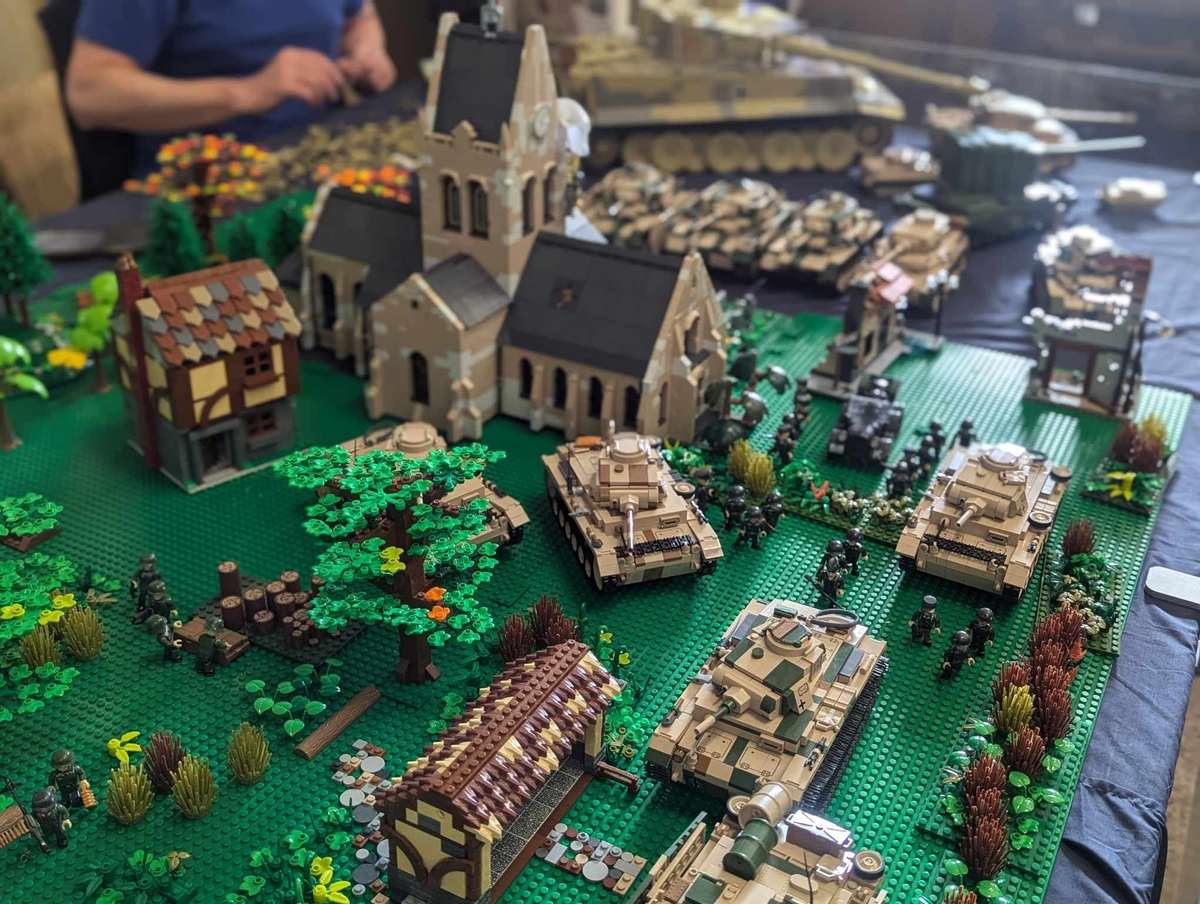
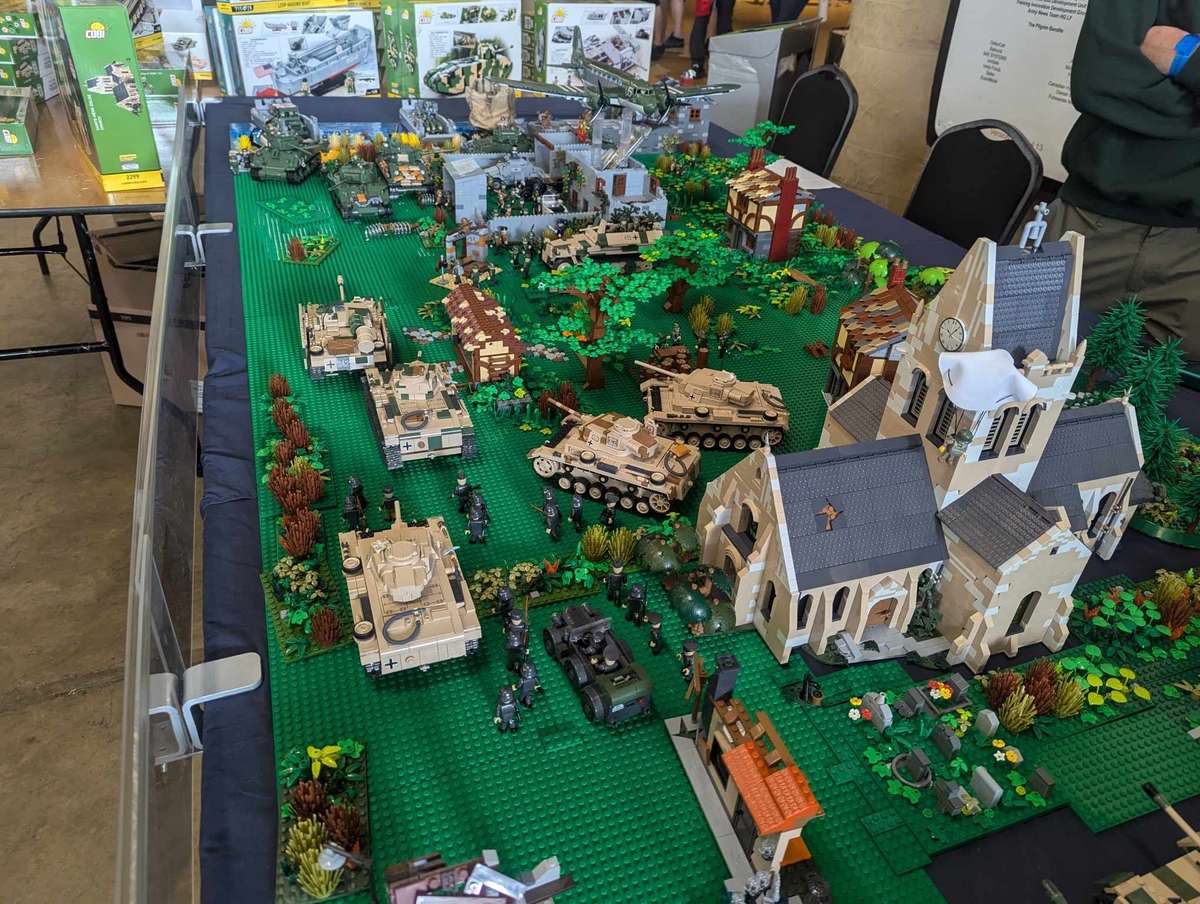
Pictured above: Thanks to Caspar R. for sharing photos of Nick B.'s diorama at the Tank Museum.
Exploring the Historic Church Sainte-Mère-Église
Sainte-Mère-Église, a quaint village in Normandy, France, holds a significant place in World War II history, primarily due to its church, the Church of Sainte-Mère-Église. This church became an iconic symbol of the D-Day landings, particularly due to a dramatic event involving an American paratrooper.
A Beacon in the Night
On the night of 5-6 June 1944, as part of Operation Overlord, American paratroopers of the 82nd and 101st Airborne Divisions were dropped into Normandy to secure key locations ahead of the amphibious landings. Sainte-Mère-Église, situated on a vital crossroads, was one such target. The village was already ablaze due to an earlier bombing raid, providing an eerie backdrop for the paratroopers descending from the sky.
A Beacon in the Night
On the night of 5-6 June 1944, as part of Operation Overlord, American paratroopers of the 82nd and 101st Airborne Divisions were dropped into Normandy to secure key locations ahead of the amphibious landings. Sainte-Mère-Église, situated on a vital crossroads, was one such target. The village was already ablaze due to an earlier bombing raid, providing an eerie backdrop for the paratroopers descending from the sky.
Among these paratroopers was Private John Steele of the 505th Parachute Infantry Regiment, 82nd Airborne Division. Steele’s parachute got caught on the spire of the Church of Sainte-Mère-Église, leaving him dangling helplessly on the side of the church. For two hours, he hung there, feigning death to avoid being shot by German soldiers. Eventually, Steele was captured by the Germans but later escaped and rejoined his unit.
Historian Stephen Ambrose, in his book "D-Day: June 6, 1944: The Climactic Battle of World War II," described the scene: “The church steeple, with John Steele hanging from it, became a symbol of the peril and heroism of the airborne troops. His plight, visible to all, epitomised the danger faced by the paratroopers.”
The successful capture of Sainte-Mère-Église was crucial. Securing the town and its surroundings disrupted German communications and reinforcements, playing a pivotal role in the success of the Utah Beach landings. The paratroopers, despite being scattered and often landing far from their intended drop zones, managed to rally and take control of key points.
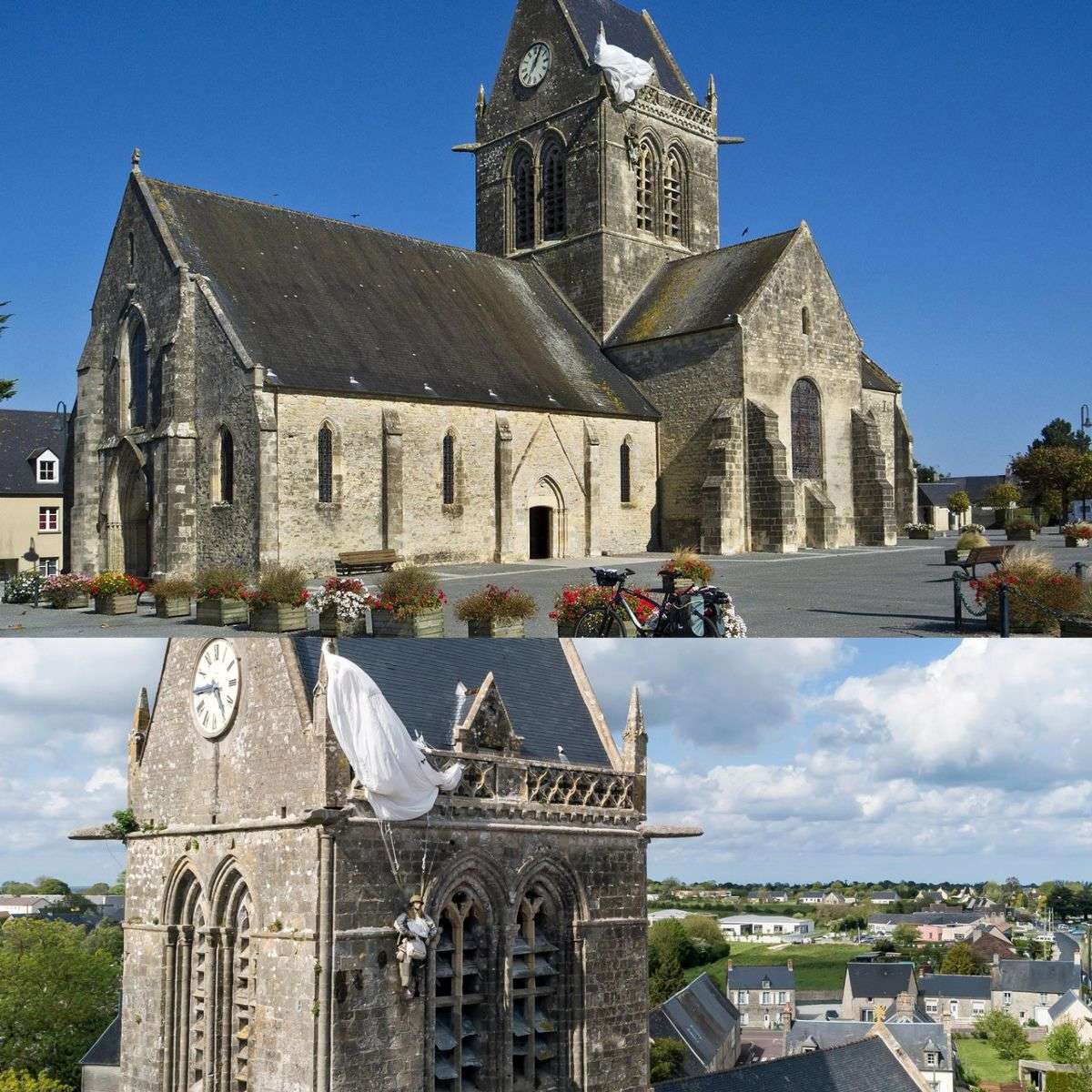
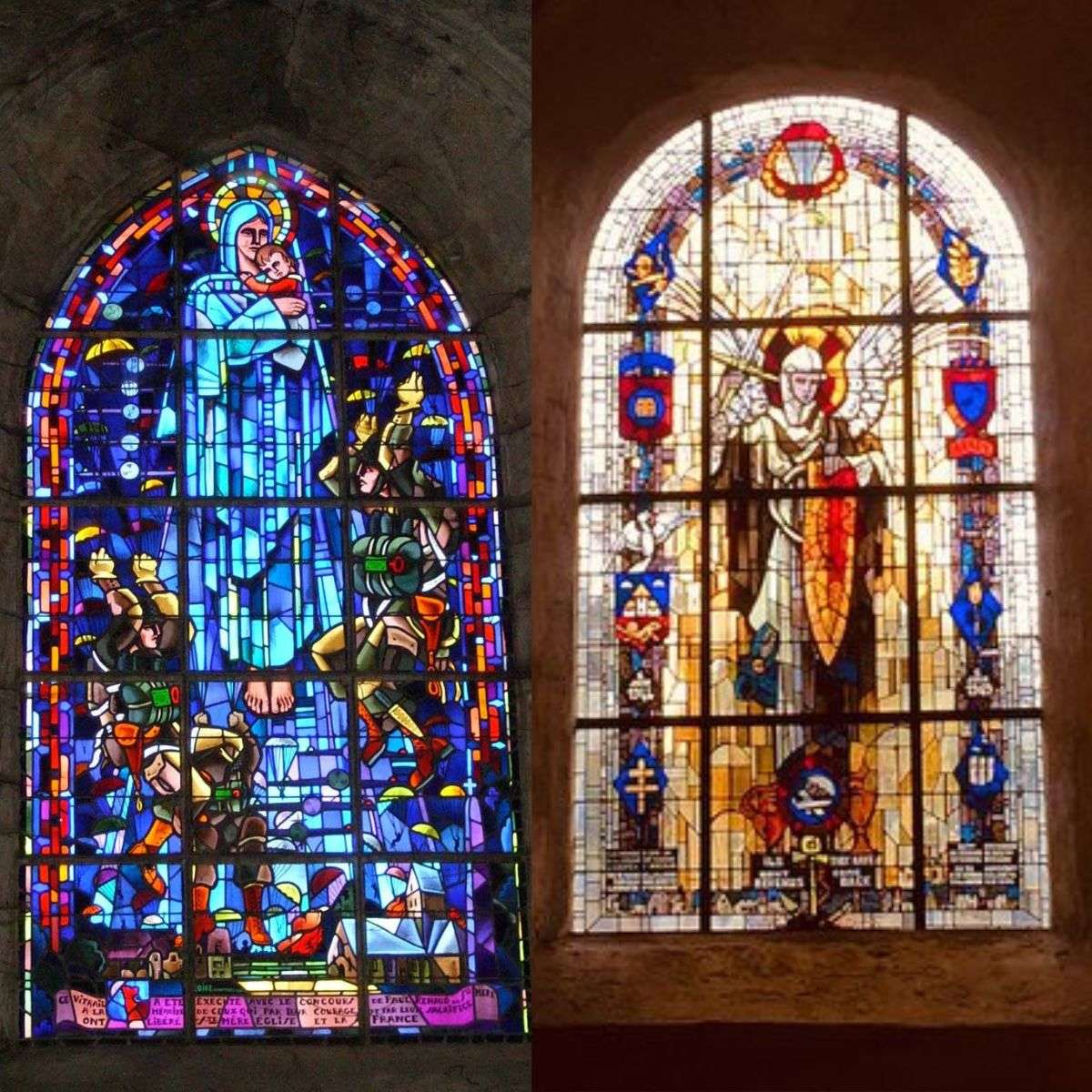
The Role of the Church
Beyond this iconic image, the Church of Sainte-Mère-Église served as a vital medical post for the wounded soldiers. Father Louis Hegarty, a chaplain with the 82nd Airborne Division, converted the church into a field hospital. The pews became makeshift beds, and the altar served as an operating table. Local residents, like Mme. Simone Renaud, played crucial roles in assisting the medics and comforting the injured soldiers.
Mme. Renaud, in an interview for a local history project, recounted, “We did what we could with what we had. The church was a place of solace amid the horror. The soldiers, some just boys, found a moment of peace within its walls.”
Preservation and Legacy
Post-war, the Church of Sainte-Mère-Église has become a site of pilgrimage for veterans, historians, and tourists alike. The church itself pays homage to its unique place in history. Inside, stained glass windows depict the Virgin Mary surrounded by paratroopers, a poignant tribute to the men who fought and fell during the liberation of the village. Another window shows Saint Michael, the patron saint of paratroopers, symbolising protection and honour.
Outside the church, a mannequin representing John Steele still hangs from the spire, commemorating the harrowing events of that night. This tribute serves as a stark reminder of the human stories interwoven with the larger narrative of the war.
Church Sainte-Mere-Eglise brick model - COBI 2299 - 2280 bricks
For the first time, COBI has released a set combining World War II history and architecture! In honour of the 80th anniversary of D-Day, COBI has created an official collector's set with a special anniversary logo for 2024.
This detailed church model, built from 2,280 bricks, features iconic architectural details and stained-glass windows commemorating American soldiers. The set includes the clock showing the exact time American paratroopers landed and there is also a historic water pump where a fierce battle took place. The roof is removable for interior access, and the set includes the hero John Steel with a parachute attached to the church tower.
COBI's brick model of the Church of Sainte-Mère-Église captures not just the architectural beauty of the church, but also the profound historical significance imbued in its walls.

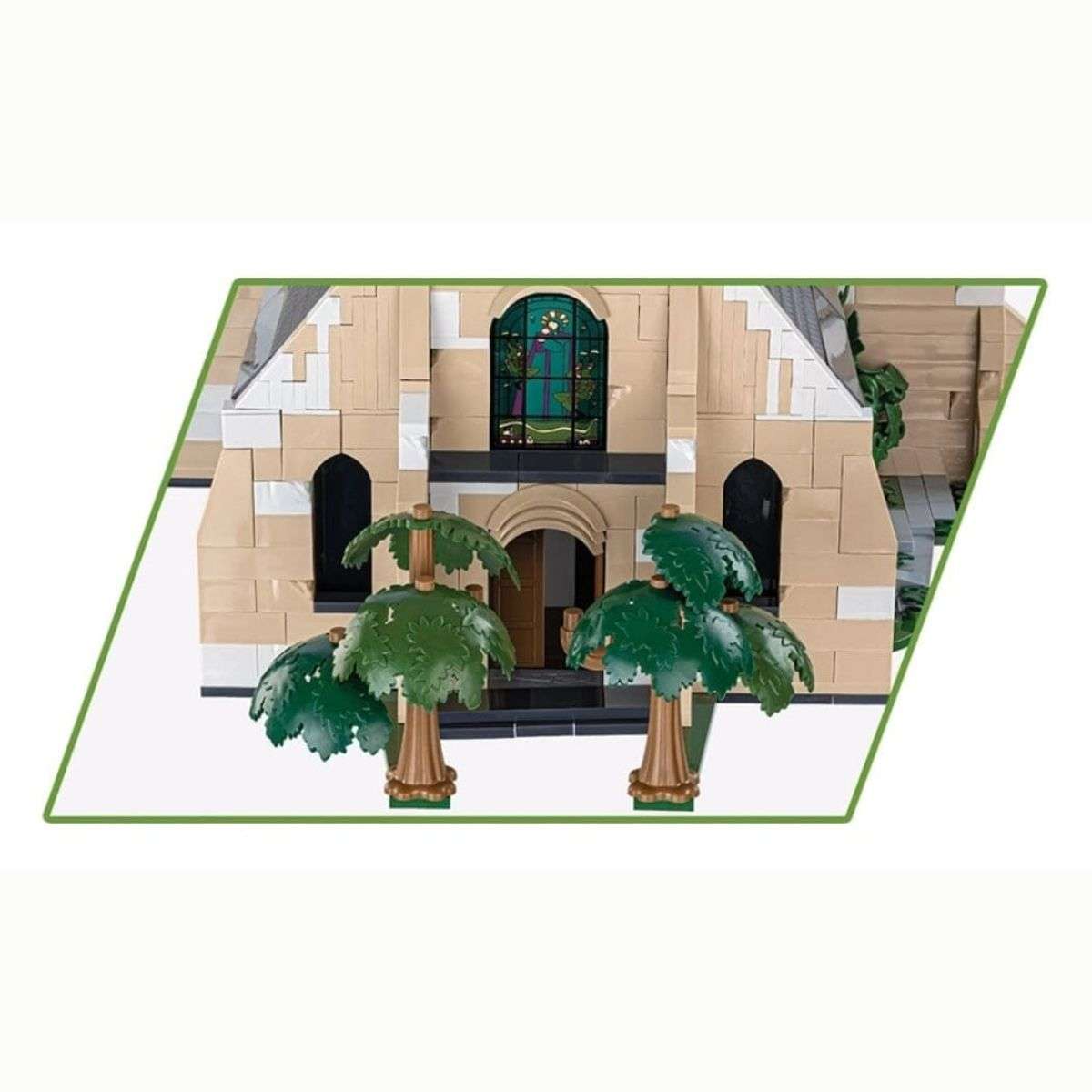
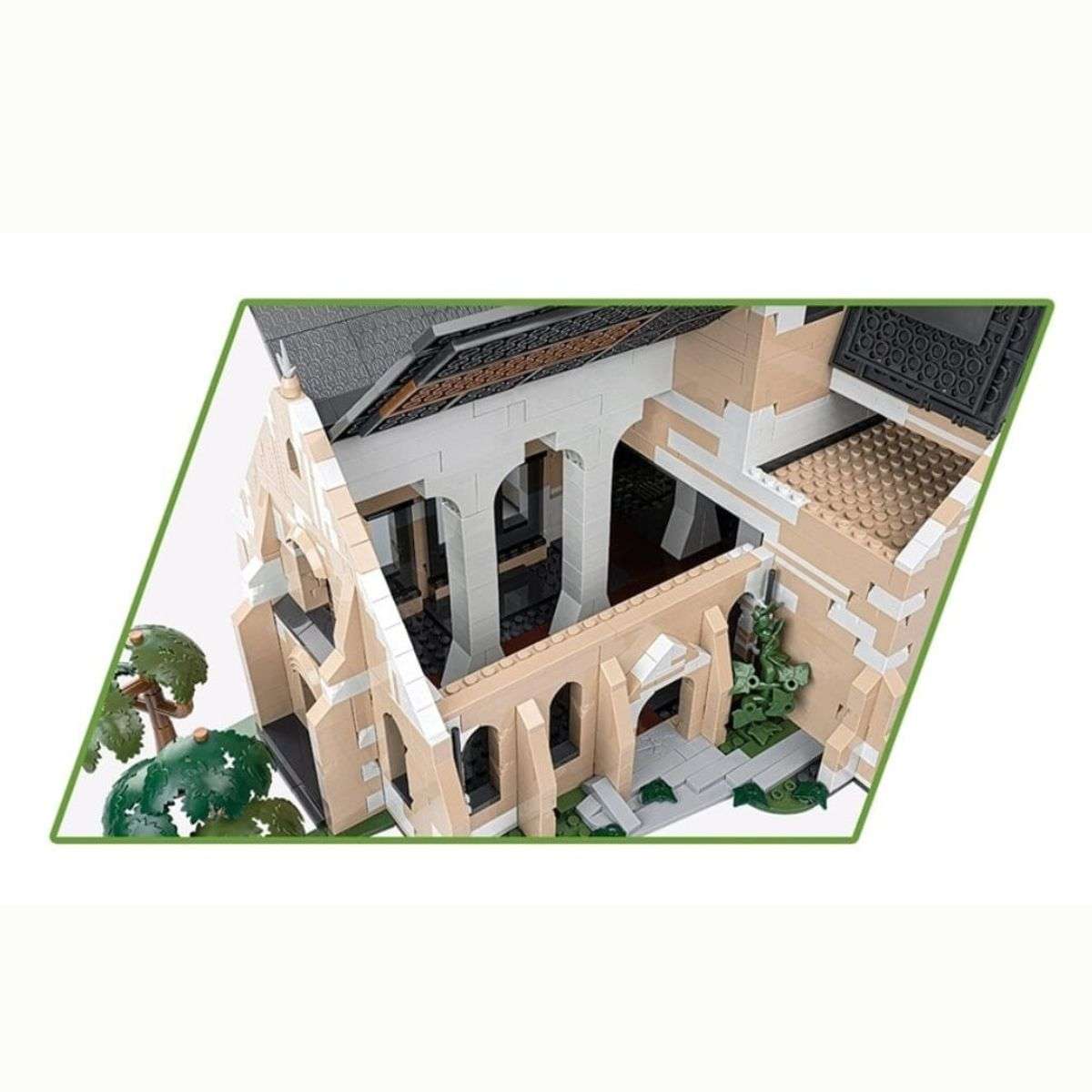
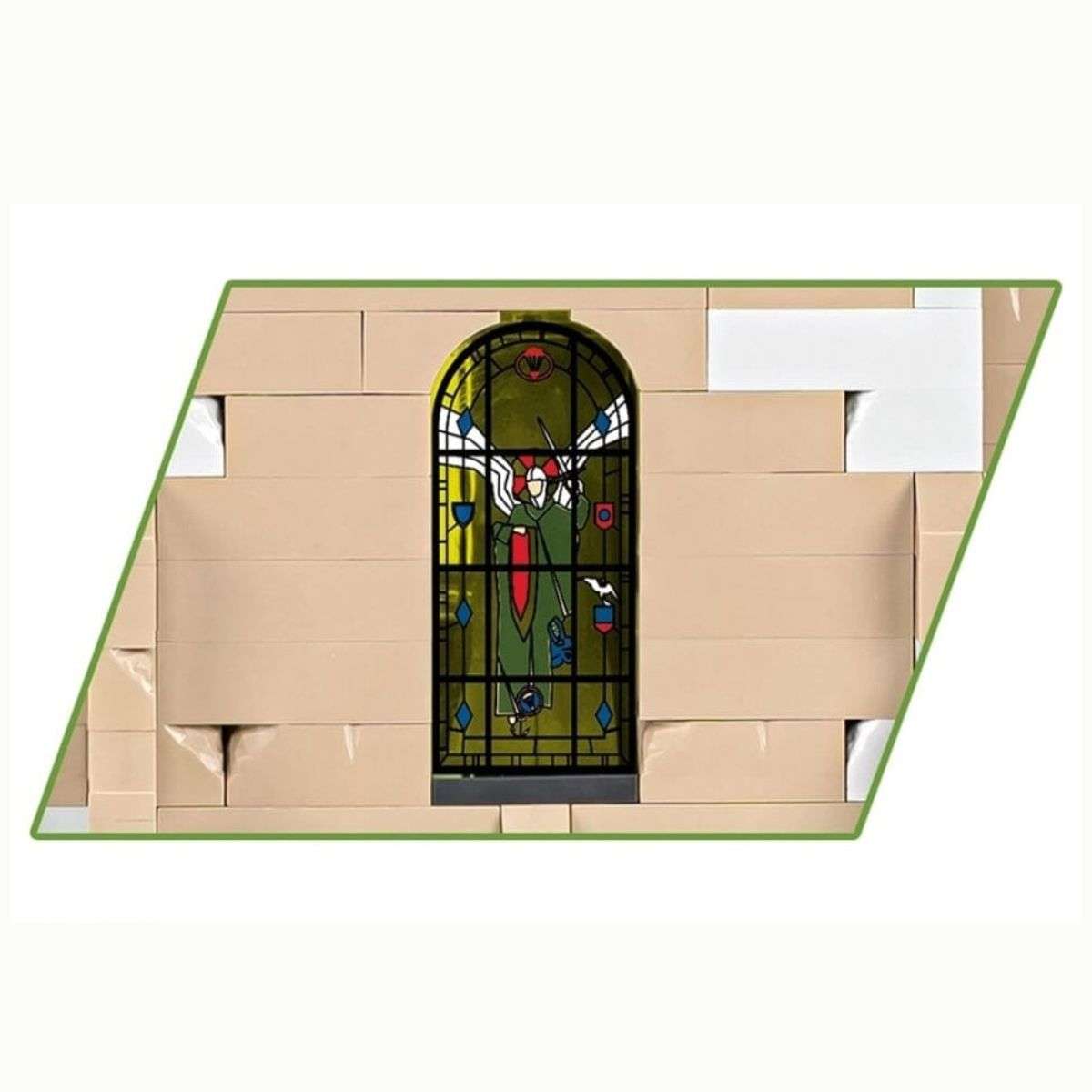
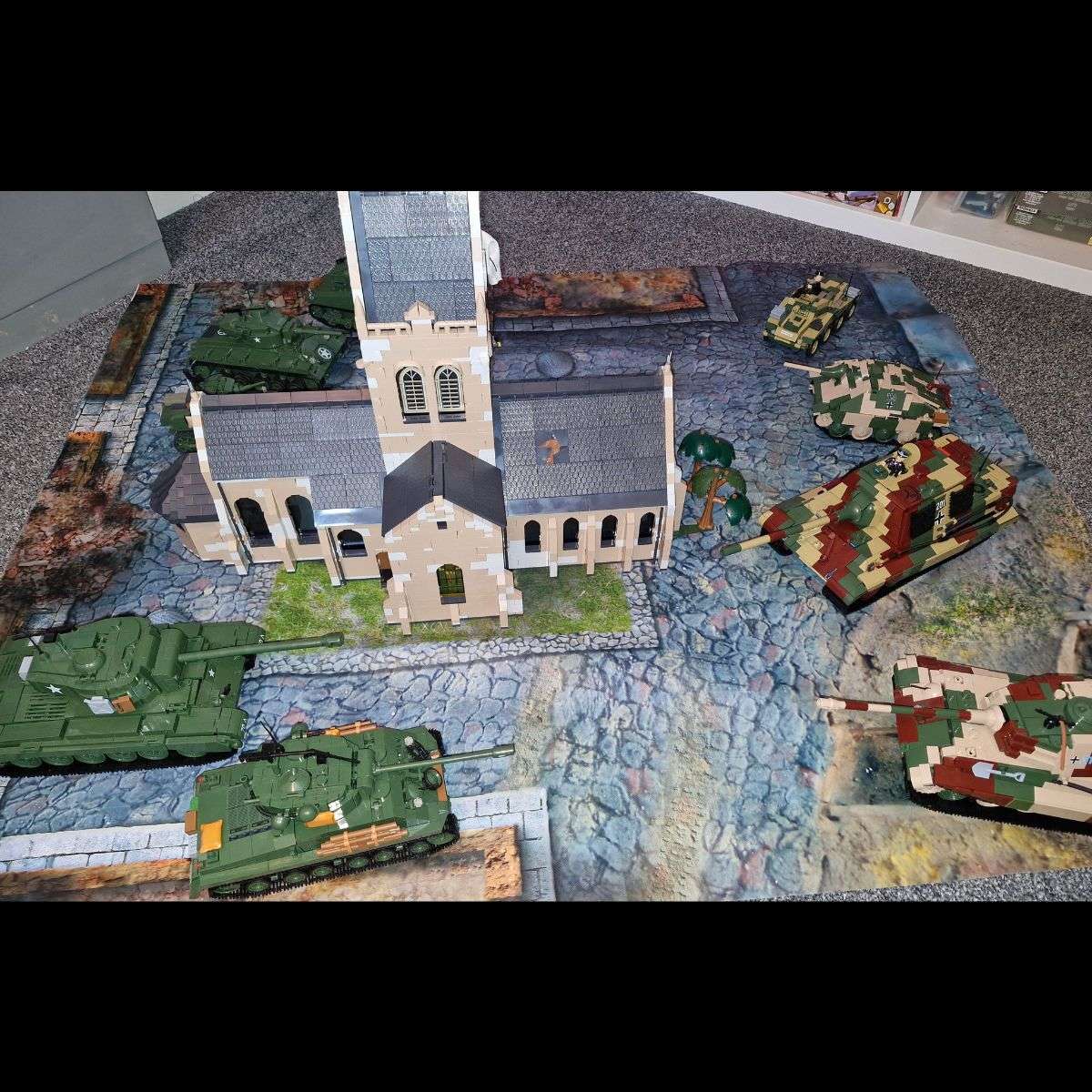
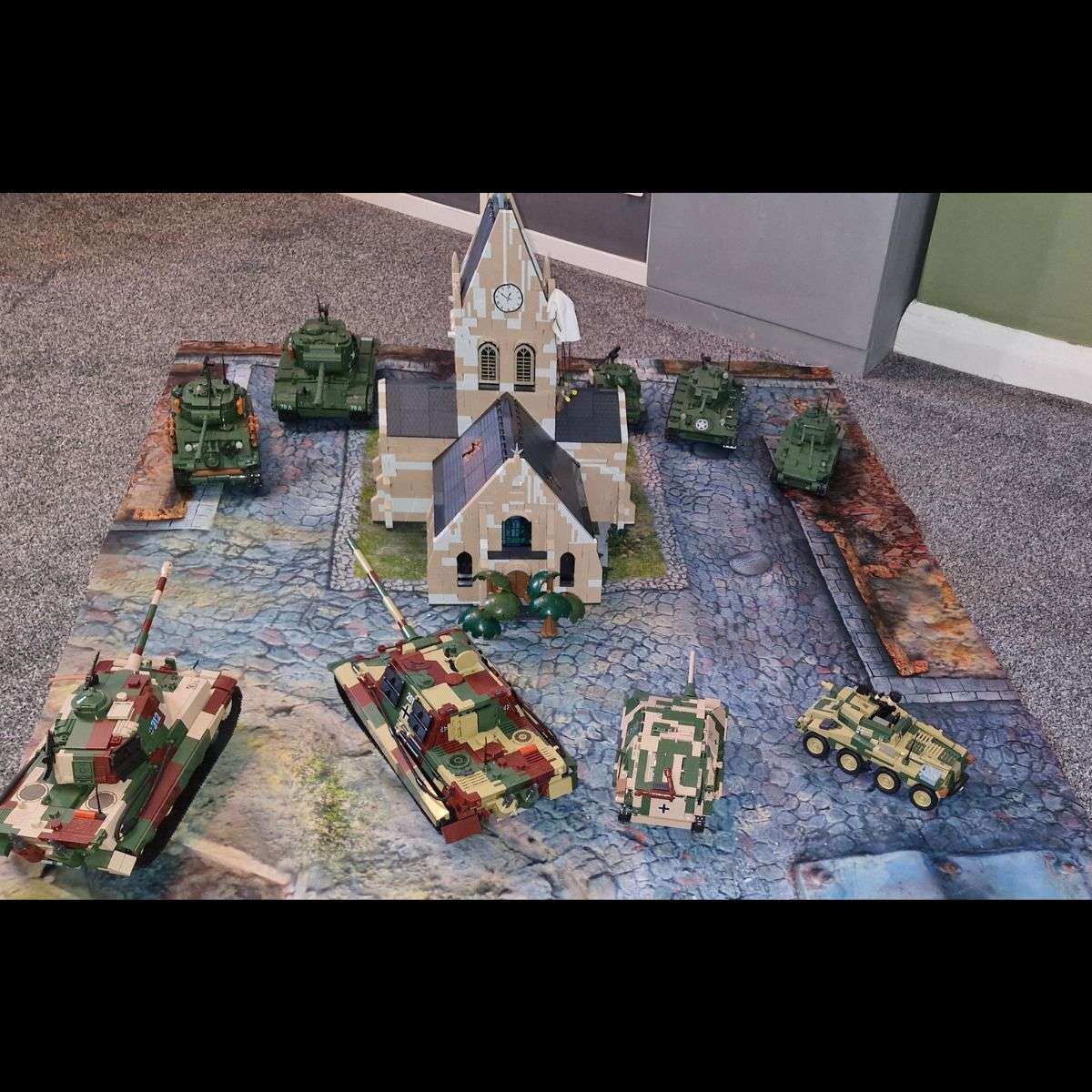
Pictured above: Thanks to Kevin W. for the photos of his built model.
 Skip to content
Skip to content

